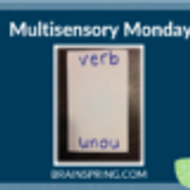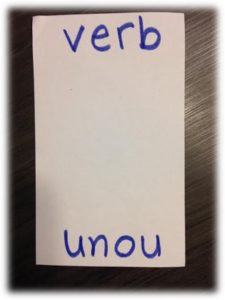Multisensory Monday: Phonological Awareness for Older Students
Posted by Angelina Spiteri-Bender on 3rd Dec 2018
We may find that some of our older students are really in a rut when it comes to reading and spelling. The missing piece to the puzzle may be due to gaps in their underlying phonological awareness. Orally blending words (tied to reading) and orally segmenting sounds (tied to spelling) may have to be tweaked to make the whole process automatic.
In a recent article published by American Public Media …
“We are born wired to talk. Kids learn to talk by being talked to, by being surrounded with spoken language. That’s all it takes. No one has to teach them to talk.
But, as numerous studies have shown, reading is different. Our brains don’t know how to do it. That’s because human beings didn’t invent written language until relatively recently in human history, just a few thousand years ago. To be able to read, structures in our brain that were designed for things such as object recognition have to get rewired a bit.
Another big takeaway from decades of scientific research is that, while we use our eyes to read, the starting point for reading is sound. What a child must do to become a reader is to figure out how the words she hears and knows how to say connect to letters on the page.”
(https://www.apmreports.org/story/2018/09/10/hard-words-why-american-kids-arent-being-taught-to-read)
Let’s Rewind a Bit …
Being phonologically aware is a foundational pre-reading skill, however, some of our older students may not have solidified this in the earlier grades. They may find it challenging to simply orally blend sounds together to read words on a page, or, segment out the individual letters in a word prior to having to spell. If either is the case, try out these activities. They are better suited for older students. Reminder – when working on phonological awareness, we are not working with print. This is an opportunity for students to slow down, listen and produce language orally.
Phoneme Blending: Card Flip
- Teacher says segmented sounds to students, students blend the sounds and determine if the word is a noun or a verb, flip the card to show answer.
- /b/ /e/ /nch/ (bench, noun)
- /s/ /t/ /o/ /p/ (stop, verb)
Phoneme Segmenting: Around the Room Words
- Teacher says a word, then points to each student as they each say the sounds in the word
- Teacher: “grape”; Students: “/g/ /r/ /a/ /p/”
- Afterward, students stand up and play “head, shoulders, knees, toes” with the same words. Students tap their head while saying /g/, then their shoulders for /r/, knees for /a/, toes for /p/.
- Play again with a variety of words.
Phonological awareness activities should be short and frequent and can be plugged in throughout the day. Maybe even before grabbing jackets to go outside, first thing in the morning or before a reading block. The more repetition, the better.
Enjoy~
Written by Angelina Spiteri-Bender
Angelina is an Educational Consultant and Instructor with Brainspring Educator Academy.
Click here to learn more about our accredited Orton-Gillingham professional development.



